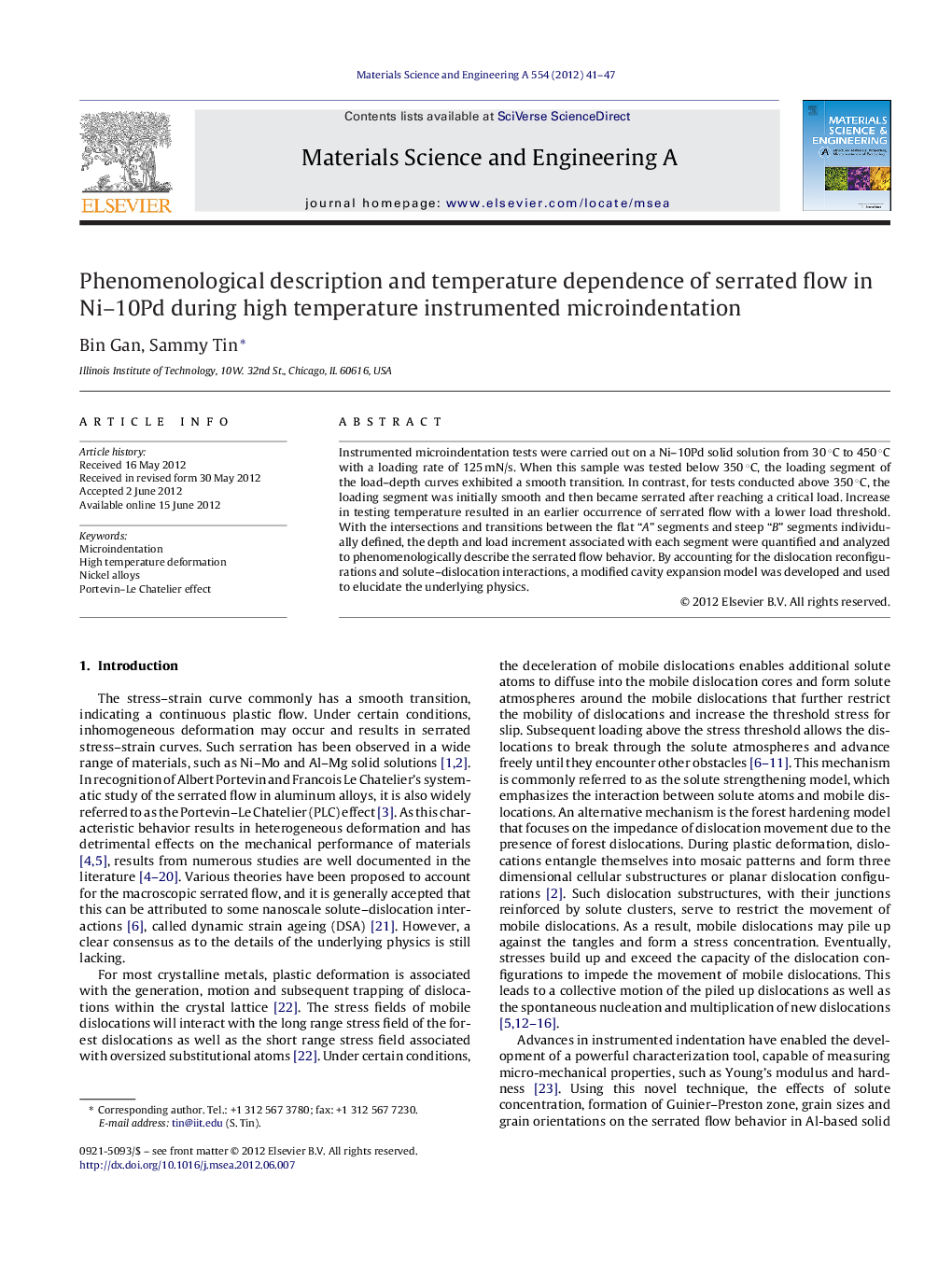| Article ID | Journal | Published Year | Pages | File Type |
|---|---|---|---|---|
| 1576859 | Materials Science and Engineering: A | 2012 | 7 Pages |
Instrumented microindentation tests were carried out on a Ni–10Pd solid solution from 30 °C to 450 °C with a loading rate of 125 mN/s. When this sample was tested below 350 °C, the loading segment of the load–depth curves exhibited a smooth transition. In contrast, for tests conducted above 350 °C, the loading segment was initially smooth and then became serrated after reaching a critical load. Increase in testing temperature resulted in an earlier occurrence of serrated flow with a lower load threshold. With the intersections and transitions between the flat “A” segments and steep “B” segments individually defined, the depth and load increment associated with each segment were quantified and analyzed to phenomenologically describe the serrated flow behavior. By accounting for the dislocation reconfigurations and solute–dislocation interactions, a modified cavity expansion model was developed and used to elucidate the underlying physics.
